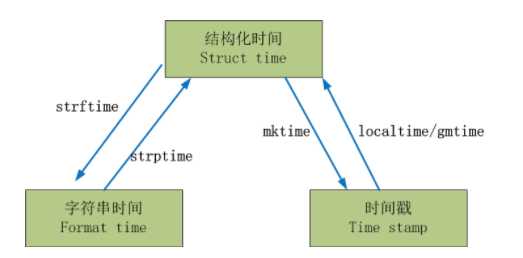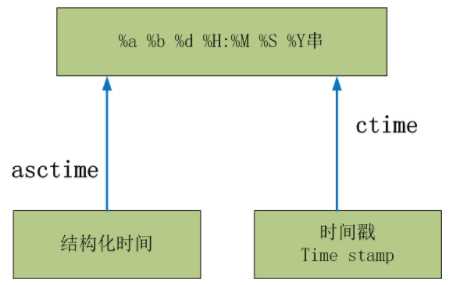标签:第几天 ptime shuff mktime 浮点 add 随机数 .sh 方式
导入模块:import 模块
模块实际就是以个.py文件
调用模块下内容: 模块.方法名
模块分类:
内置模块、第三方模块、自定义模块
模块查找顺序:
自定义模块--第三方模块--内置模块
time模块
表示时间的三种方式:
时间戳是计算机能够识别的时间;时间字符串是人能够看懂的时间;元组则是用来操作时间的
# <1> 时间戳
import time
print(time.time()) # 返回当前时间的时间戳 1511879098.7924516
# <2> 时间字符串
print(time.strftime("%Y-%m-%d %X")) #2017-11-28 22:24:58
# <3> 时间元组
print(time.localtime()) # localtime 当前时间 gmtime 世界标准时间
#time.struct_time(tm_year=2017, tm_mon=11, tm_mday=28, tm_hour=22, tm_min=25, tm_sec=39, tm_wday=1, tm_yday=332, tm_isdst=0)
s = time.localtime() # 结构化时间的对象
print(s.tm_year) # 2017
...
时间形式转换

import time s = time.localtime(123135456) # 时间戳转换成结构化时间 print(s) s =time.mktime(s) # 结构化时间转换成时间戳 print(s) s = time.strftime(‘%Y-%m-%d‘,time.localtime()) # 结构化时间转换成字符串时间形式 print(s) s = time.strptime(‘2019.6.9‘,‘%Y.%m.%d‘) # 字符串时间转换成结构化时间 print(s)
传入时间字符串,基础上加3天,然后显示
import time
def timer(s):
s = time.mktime(time.strptime(s,‘%Y-%m-%d‘))
s += (3*24*60*60)
s = time.strftime(‘%Y-%m-%d‘,time.localtime(s))
return s
print(timer(‘2017-8-9‘))
结构化时间、时间戳,直接转换字符串形式,返回固定的格式

import time s = time.localtime() print(time.asctime()) # Tue Nov 28 22:54:13 2017 s = time.time() print(time.ctime(s)) # Tue Nov 28 22:54:13 2017
time.sleep(n)
模拟IO操作,停n秒
def foo():
print(1)
time.sleep(2)
print(2)
foo()
random模块
import random print(random.random()) # 大于0且小于1之间的浮点型数字 print(random.randint(1,6)) # 大于等于1且小于等于6的整型数字 print(random.randrange(1,6)) #大于等于1且小于6的整型数字 print(random.choice([1,3,5,‘a‘])) # 从选项中随机取一个值 print(random.sample([2,5,8,‘a‘,‘f‘,6],2)) # 指定从选项中随机取几个值 这里是2 个 print(random.uniform(1,5)) # 取大于1且小于5 之前的浮点数 l = [1,5,4,8,6,4,5] random.shuffle(l) # 随机打乱顺序 print(l)
随机验证码
import random
def v_code():
code = ‘‘
for i in range(5):
n=random.randint(0,9)
c=chr(random.randint(65,90)) # A - Z , a -z(97,122)
add=random.choice([n,c])
code="".join([code,str(add)])
return code
print(v_code())
十六、模块:time模块(时间)、random模块(随机数)
标签:第几天 ptime shuff mktime 浮点 add 随机数 .sh 方式
原文地址:http://www.cnblogs.com/Mr-chenshuai/p/7912716.html